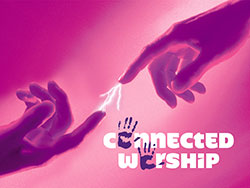 I was recently asked to write a short piece of about 300 words for the Fendalton Parish magazine. I was asked to write about connecting to liturgy – including for young people. This is what I wrote:
I was recently asked to write a short piece of about 300 words for the Fendalton Parish magazine. I was asked to write about connecting to liturgy – including for young people. This is what I wrote:
Do we connect with liturgy? I think that we can connect through good liturgy done well – with each other and to God. I think that is true whatever our age or stage. It is true for the young people who are the primary focus of my ministry.
Recently I had to get a new pair of glasses. Without glasses I really cannot see at all. The lenses for these new glasses use the latest technology. But, like all my spectacles over recent years, they are also a compromise between helping my presbyopia, astigmatism, and myopia.
Switching glasses is always a bit tedious. Each pair deals with the compromise differently. I have to adapt to the distinctive way these lenses deal with helping me see.
I could not cope if every time I put on glasses it was a different pair, or even just a pair selected from a large number of possible spectacles.
My glasses should be pretty much imperceptible to me. If, instead, it is the pair of glasses that I am too conscious of, then they are not fulfilling their purpose.
Liturgy is the way we together see God – as best we can in this life (acknowledging that in liturgy we, too, make compromises). Liturgy is our shared pair of spectacles. But some individuals, some communities, incessantly change their liturgies. The danger is that people focus not on the God we meet together in liturgy; the liturgy, rather than God, can become the focus.
Liturgy and leadership should not draw attention to themselves, but be as transparent as possible, transforming community and letting God shine through.
Young people (and older people) may need times outside worship when they can ask about and talk about, our tradition of worship. But in liturgy we should trust the great symbols (of bread, wine and water), the words we have been saying for thousands of years and God Himself to work in our worship. The barrage of incessant additions, explanations, and interpretations of what is happening that I find when I participate in worship in some places as a visitor, pad out the time well beyond the attention span of young people. And just confirm to young (and old) that we do not really trust our liturgy to make the connections.



Thanks, Bosco, for this post. As a ‘dyed in the wool’ A.C., reaching back many years – through membership of a religious order and subsequent priesthood – I have come to the conclusion that meaningful liturgy is part and parcel of my approach to God. All the sights, sounds and smells of good worship are, for me, at the root of my sensitivity to God’s Presence among God’s people. A confluence of attention to both God and one another.
A foretaste of Heaven? Hopefully, but also a manifestation of Heaven on earth.
The barrage of incessant additions, explanations, and interpretations of what is happening that I find when I participate in worship in some places as a visitor, pad out the time well beyond the attention span of young people.
Fair comment, but that could indicate that the liturgists did a bad job in the first place (I’m thinking particularly of the unholy mess that is the CofE’s Common Worship Baptism service).
I quite agree with you, James. I have not studied the rite you mention (and I’m underwhelmed by the NZ baptism rite). Rites rightly are critiqued, and poor rites may very well need “repairing” when used. I’m talking about an addiction to preventing the symbols, gestures, and words from actually doing what we know they can and ought, by incessant blabbering on. Christ has risen.